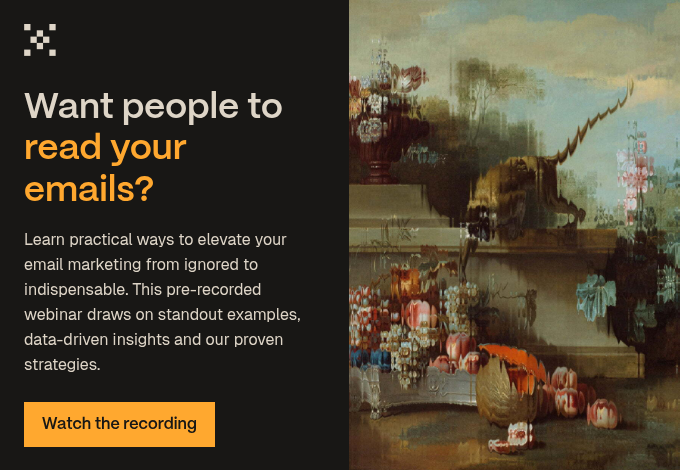You need the right skills in your business to deliver on your promises to customers.
At the start of a customer engagement, you have two things: potential and good intentions. But they will only get you so far. You require both resources and skills to follow through. To ensure, in other words, your marketing is more than just hype; it’s a true, tangible reflection of your unique value proposition and ability to deliver.
‘You’ve got to build a team that is so talented, they almost make you uncomfortable.’
— Brian Chesky, CEO of Airbnb
Take time to audit the skills and resources you have in-house, and how things might be optimised or outsourced. You may need to invest in devices, training, workshops, certifications, even automation — all of which will empower your employees to do their best work.
This is a two-way street, of course. You, as a business, must deliver on your promise to support employees, and employees must be self-motivated to achieve goals that benefit both themselves and the company as a whole. That’s the road to victory.
So, now, we’ll go through four steps to help you define your playing field and differentiate on the basis of your skills and resources.
Step 1: Take stock of your skills
To determine what skills you already have in your business, ask your team members to name around five to ten skills they have or are working on, and how they would rate their abilities in those areas. You could do this with just your own team, to begin with, then extend the exercise to other departments. Include soft and hard skills. As you likely know, ‘soft skills’ are things like:
- Good communication
- Time management
- Problem-solving
- Organisation
- Teamwork
And so on. On the other hand, ‘hard skills’ might be the ability to use certain software, application development, copywriting, or things of that nature.
Armed with this information, you can start to build a skill framework that visualises patterns or gaps in your ideal employee skillset. For example, if you’re a start-up that is strong in development power but weak in project management, then that’s something you would either want to train for, hire for or even outsource.
Understanding this helps to ensure you know what you can and can’t deliver for customers, and where you have exceptional levels of resources (such as multiple certifications in a certain skill). This is an iterative cycle: customer demand drives upskilling, while skill development can expand your revenue streams.
Step 2: Take stock of your resources
You can do the same sort of exercise with resources. Simply list out your resources in terms of people power, such as employees in each department, freelancers, contractors or other third parties. Suppliers, vendors, partners, consultants — these can all be considered resources in this context. Resources can also be things like offices, data, technologies and more (we’ll talk about tech in the next chapter: ‘The toolkit’). Consider things like:
- What is the utilisation rate in your business?
- Do you know the bottlenecks and dependencies for upcoming projects?
- What new resources will be required to meet your growth plans?
If you like a matrix (and we sure do), then break down those answers into the Rumsfeld matrix. This concept is based on a phrase uttered by US Secretary of Defense, Donald Rumsfeld: “There are unknown unknowns”. The matrix, originated by Mikael Krogerus in The Decision Book, breaks knowledge into four categories:
- Known knowns: Things you are aware of (data/evidence) and understand (insight).
- Known unknowns: Things you are aware of, but don’t understand (due to lack of insight, methodology, skill or some other missing quantity).
- Unknown knowns: Things you understand intuitively, but lack data on (the unproven hypothesis).
- Unknown unknowns: Things you don’t know you don’t know, meaning you lack both awareness and understanding (blind spot).
Similar to the personnel management tool known as the Johari Window, these four categories help to define your parameters. For example. You have a rough idea of your team’s capacity, but don’t have the means to measure that data — that’s an example of an unknown known. You have a gut feeling, but lack hard data.
The more information you gather, the faster you can act to shore up those skill gaps and acquire the resources you need to grow and differentiate your business.
Step 3: Supercharge your existing assets
The reality is, you may be under-resourcing your talented, skilled workforce. Consider how you might empower them with training, technologies, automation and even artificial intelligence, so they can outperform competitor peers who are slower to adapt.
Where possible, use training programmes to gain valuable certifications for your business. These can be shared on your website and on other communication channels, and can even unlock access to networking opportunities. Certifications and awards are persuasive and reassuring proof-points of your expertise. They will make prospective clients sit up and take notice.
For example, Microsoft offers certifications that will help you show that you’re keeping pace with today’s technical roles and requirements. These are available for individuals and teams, and contribute towards tiered business-wide certifications and standards. HubSpot offers a similar system for marketers and partner agencies (like Articulate Marketing).
Step 4: Outsource everything else
For everything else, there’s outsourcing. If you don’t have the skills you need in-house, you will benefit from interventions and support from a third-party expert.
Here’s a use case. In smaller firms, owner-managers tend to take on the brunt of sales and marketing. That is a Herculean task on top of running a business day-to-day and taking care of the decisions to achieve that all-important future vision. The good news is, you don’t have to do it alone. You could hire a marketing agency to navigate those thought processes, and run that activity.
Just a suggestion.
To put it another way, experts can help you fill in the blanks on your Rumsfeld matrix. They are able to test your unknown knowns and provide insight into your known unknowns. And, most importantly of all, they know what you don’t. That’s rather the point.
When you hire an agency or a consultant, you are explicitly bringing honed expertise into the business, alongside specialist knowledge, and collective strategic and implementation power. The organisations that leverage expert intervention at key stages are going to grow faster and make better decisions than those too proud, or too cheap, to do the same.

 Posted by
Maddy Leslie
Posted by
Maddy Leslie






